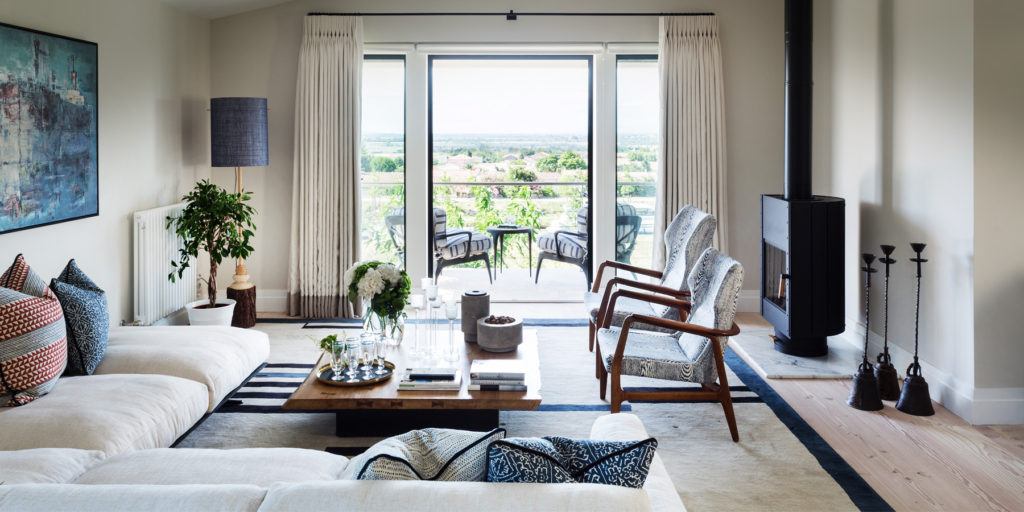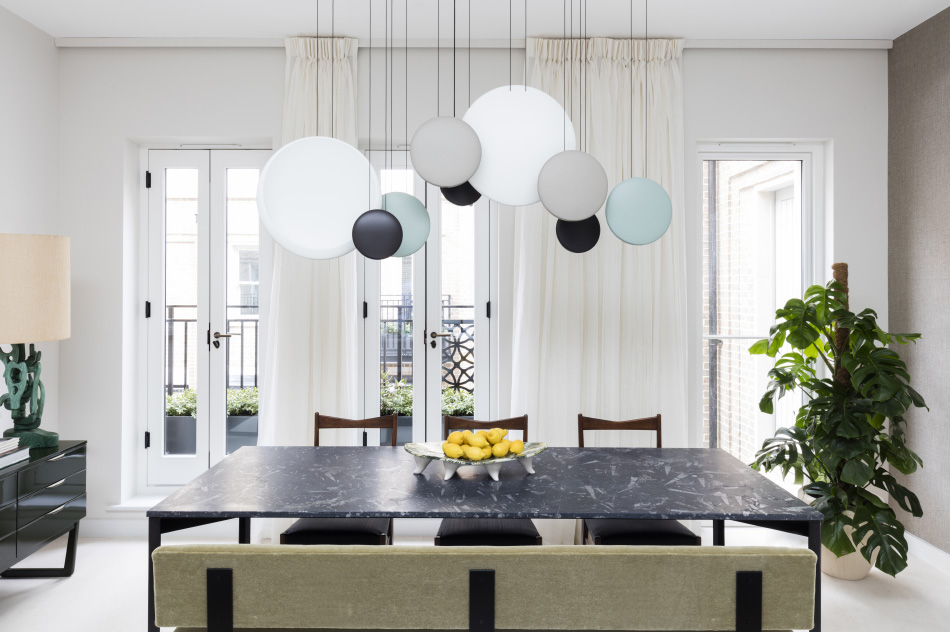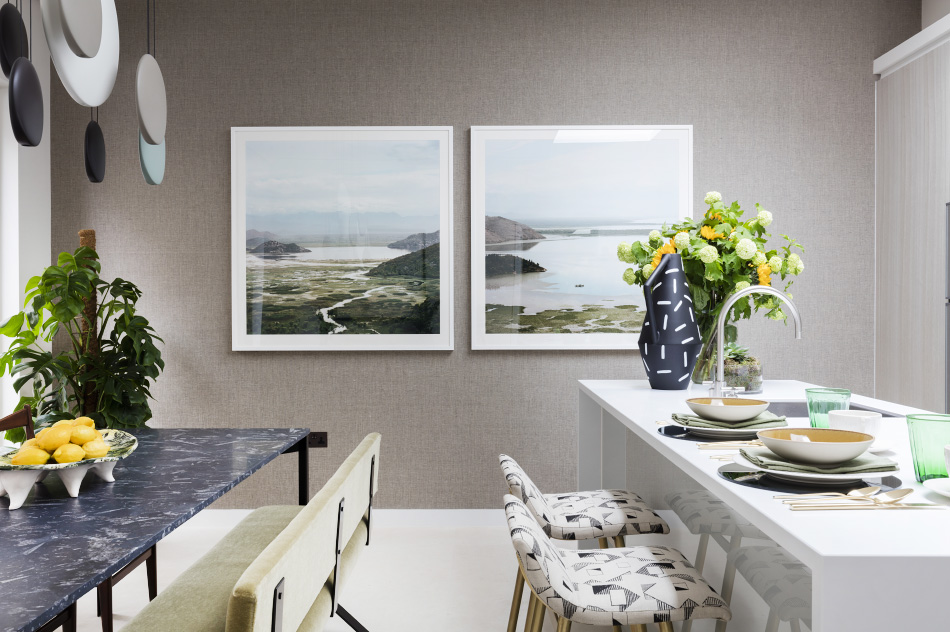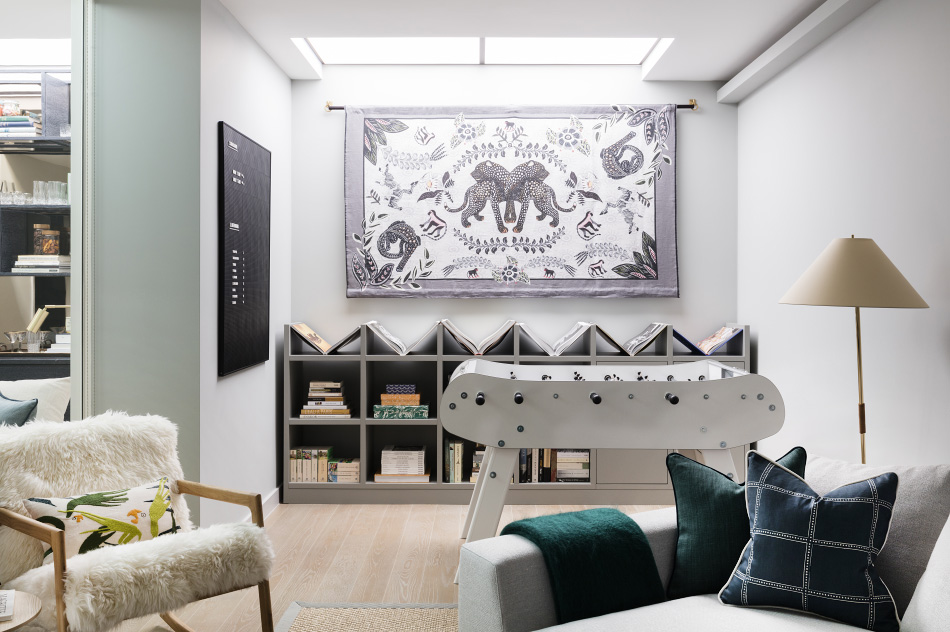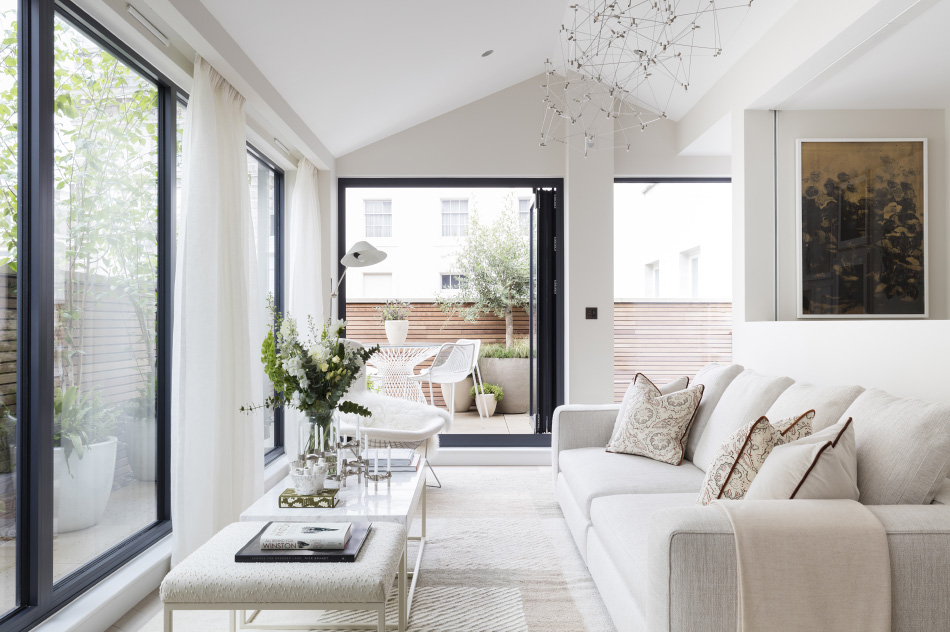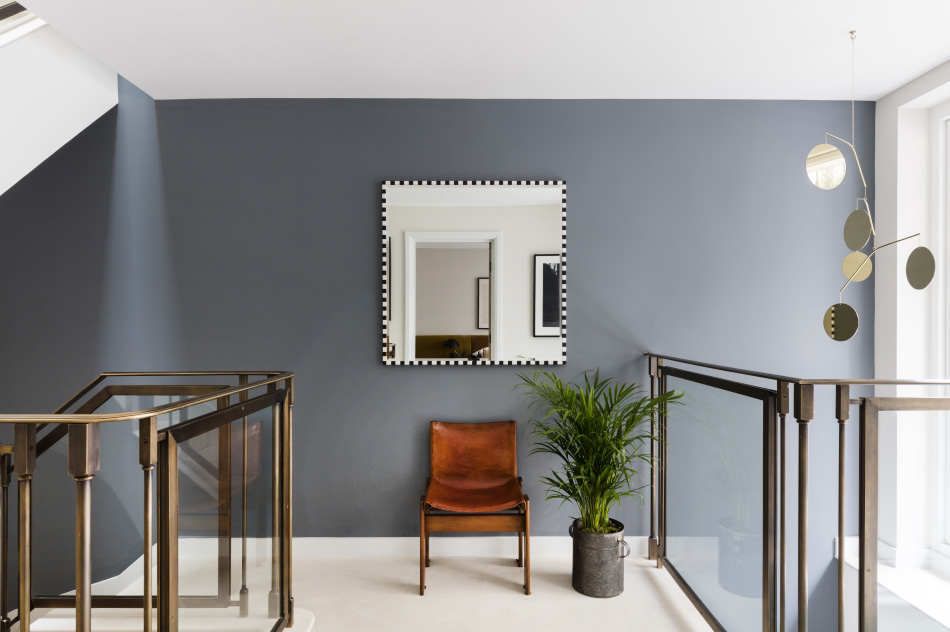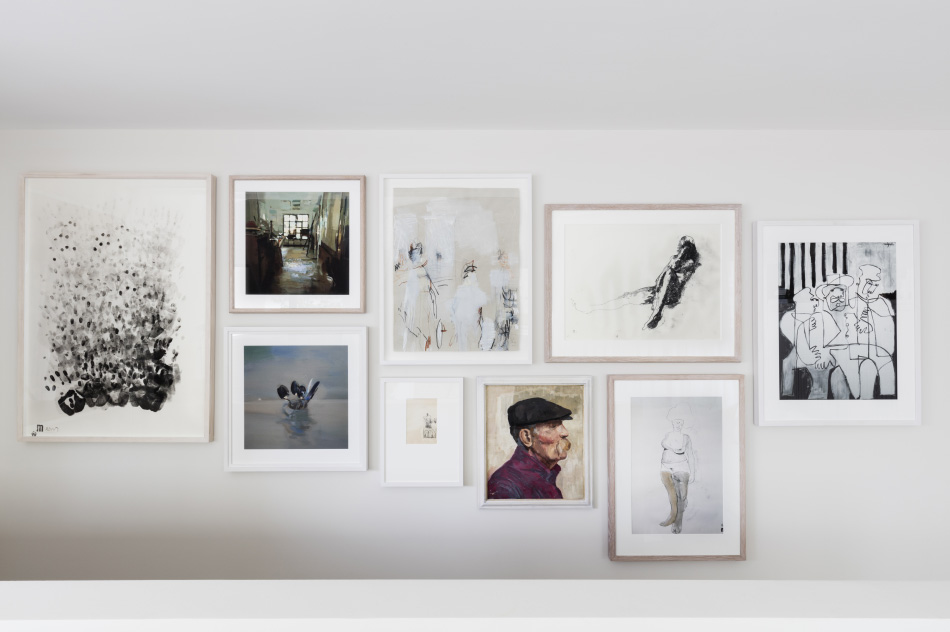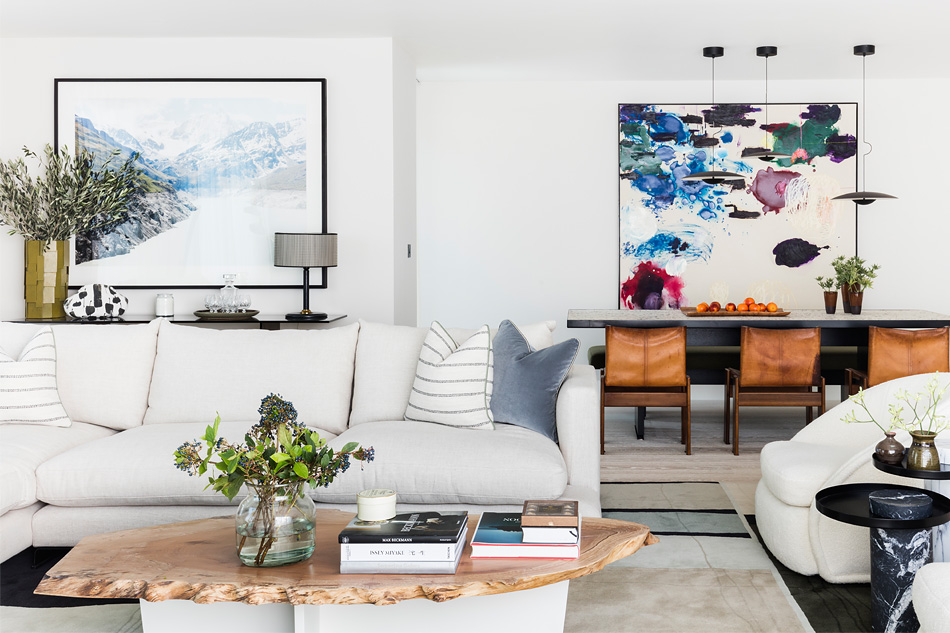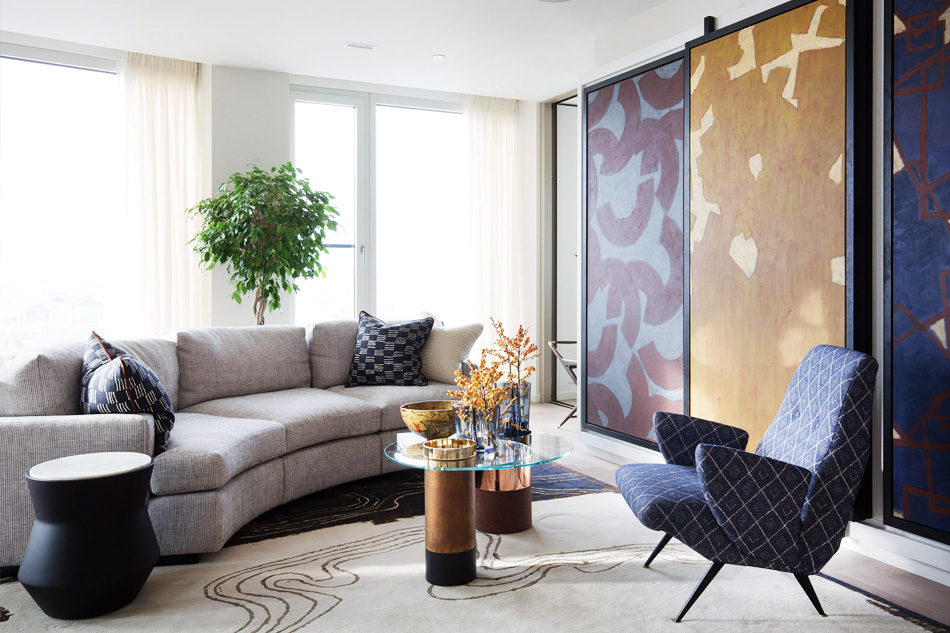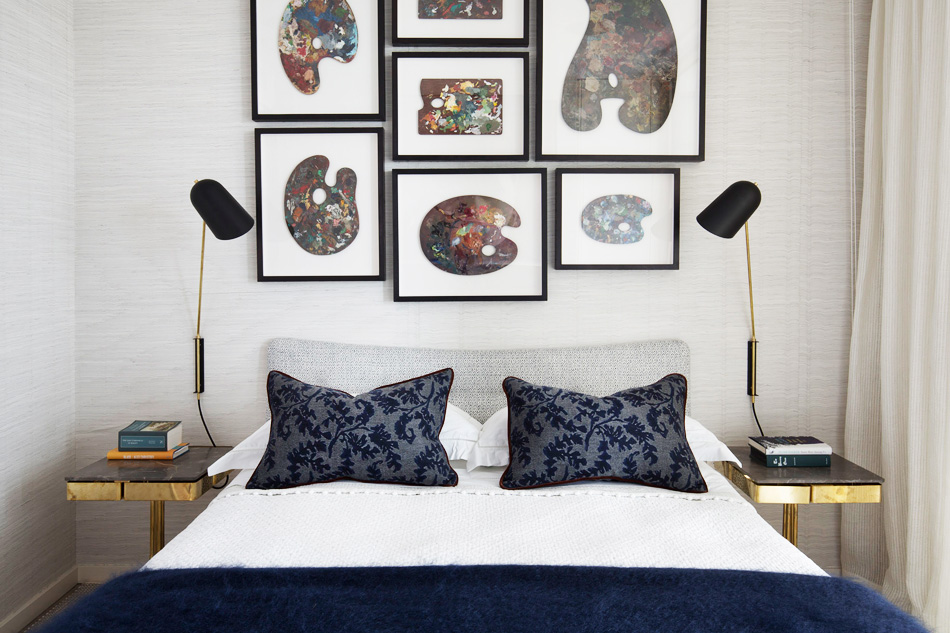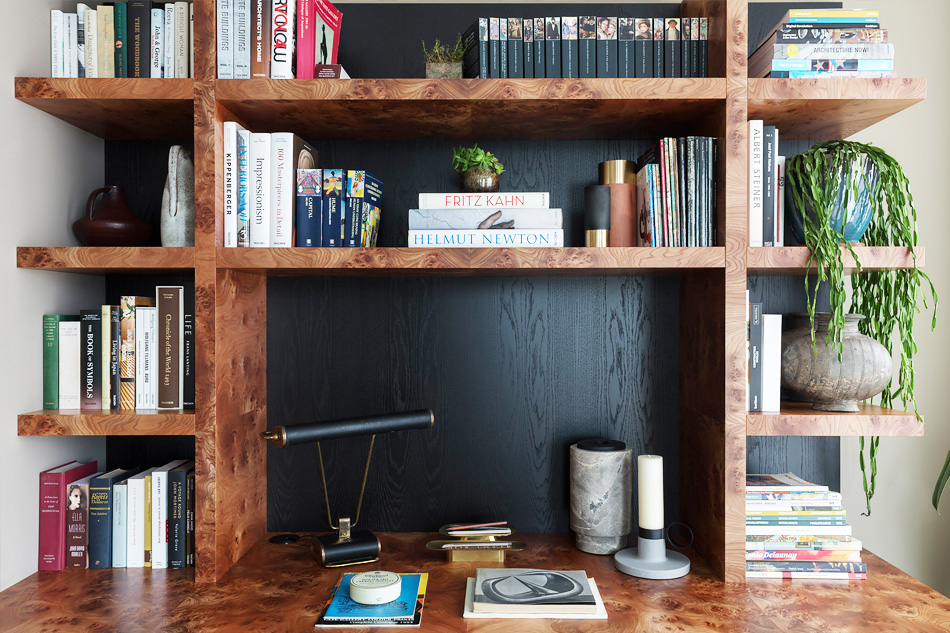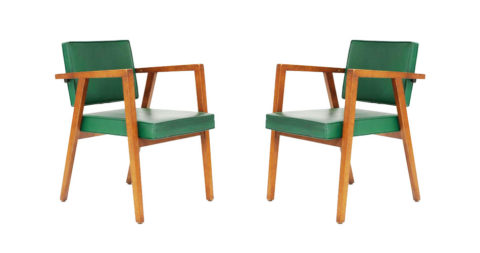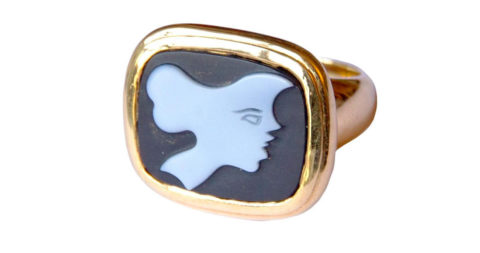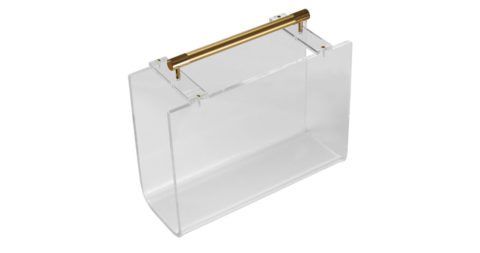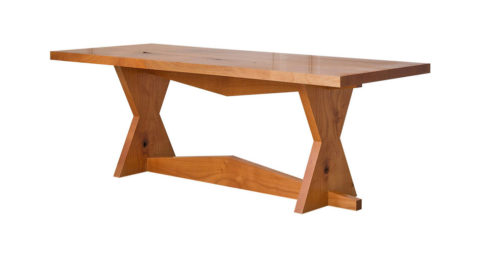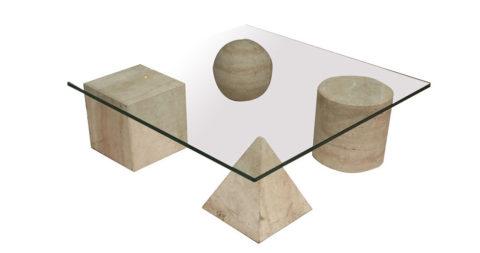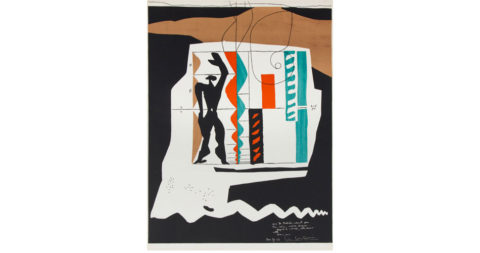
August 8, 2016Still in her 20s, South African–born, London-based decorator Sophie Ashby is already capturing the attention of the design world. Top: In a project in Capestang, France, 1960s Danish lounge chairs by Aksel Bender Madsen for Bovenkamp face an L-shaped sofa and a bespoke walnut-inlaid oak coffee table by the designer’s own Studio Ashby. All photos by Phillip Durrant
No one wants the bland option anymore,” Sophie Ashby says confidently. “It’s a bit like the food revolution in London, it’s a whole new world. I think interior design is having a similar mini-revolution.”
The 28-year-old Ashby is playing a part in that revolution with her strong, self-assured style, characterized by a judicious use of color, a fine eye for form and proportion and a love of bold artwork. About two years ago, at just 25, she started Studio Ashby with a single client. Today, she employs 11 people and is working on projects as varied as a rambling country house in Somerset, England; a Nigerian restaurant in London; and a boutique hotel in the Winelands north of Cape Town, South Africa.
Ashby, who has a South African mother and a British father, grew up in both countries and attributes her career choice, at least in part, to her peripatetic childhood. “We lived in so many different kinds of homes — a Cape Dutch farmhouse in South Africa, an Edwardian house in London, a very contemporary place with wood and glass in Devon,” she says. “My parents were always doing up their houses, and I became interested both in real estate and renovation, although I was also totally obsessed with art growing up, to the great detriment of my other subjects!”
For a while, Ashby thought she would be an artist, but she made the pragmatic decision to pursue design because she felt she had a better chance of success in the trade. “I was put off by the idea of being penniless and struggling, which of course a true artist would not be,” she says with a laugh. “By the time I was eighteen, I had come to the conclusion that interior design was the perfect combination of what I loved.”

In the Capestang home’s dining room, Giopato & Coombes’s Bolle chandeliers hang over a zinc and black-metal dining table Ashby designed.
Ashby studied art history at Leeds University, then went to Parsons School of Design in New York for a summer course in interior design. After moving back to England, she took a position with Victoria Fairfax, a grande dame of the London design scene, where young Ashby found herself working on the most impressive country houses, French châteaux and European lakeside villas. “I didn’t realize it at the time, but it was a real apprenticeship with antiques and an Old World tradition,” Ashby says. “Victoria was incredibly knowledgeable about antiques and rugs and had the best color sense of anyone I’ve come across.”
After two years with Fairfax, Ashby moved on to a multidisciplinary creative agency, where she started an interior design department. “They were working quite a bit with interiors projects, and they needed someone to dress the spaces,” she explains. “So at age twenty-three, I was required to have a style and make decisions. They gave me a lot of freedom, and that was really formative in developing my own tastes. Although, actually, it was pretty clear to me from the start what my taste was and what I felt was important.”
Ashby’s charm and confidence clearly convinced clients of her potential from the outset. After heading her own team at the agency for two years, she was asked by a real estate developer to dress a large townhouse just off Trafalgar Square and decided to step out on her own. Thus Studio Ashby was born, with Ashby working alone from a café. “I felt that job, managed carefully, could support me for a year,” she says. “But three weeks later, I got another, and it has carried on like that. I never projected anything like it. It has been a shock to me every step of the way.”
The Studio Ashby’s style is “a little different,” she explains. “It’s not a London luxe look. I don’t like things too perfectly coordinated, and I am interested in quirky shapes and objects. Antiques are twenty to thirty percent of every project, because you can get so much more interest into a room if you look to the past.”
“Antiques are twenty to thirty percent of every project, because you can get so much more interest into a room if you look to the past.”

In the Soho apartment, a print by Natasha Russell hangs above an Uso Interno armchair.
A few core values are embodied in all her projects, Ashby says. She dislikes anything that is reproduced, copied or fake and loves to highlight the natural beauty of materials like wood, marble and leather. “Particularly with more contemporary pieces, we aim for simplicity, to create something simply beautiful,” she says. “The drama comes from the antiques. The way I explain it is that, if I need a dining-room chair, Giò Ponti has designed something much nicer than I could.”
For Ashby, who is a young patron of the Royal Academy of Arts and a dedicated frequenter of galleries, the crux of any project, and the start of the design process, is art. “It’s a lot to do with the palette,” she says, “but it’s also a window into the client’s tastes and world. If it’s a project from scratch where there is no art collection, I think of myself as the collector alongside the client. For me, it’s about having a real variety — different media and composition and structure and tone. I try hard for the art and furniture to be elegantly juxtaposed. and they are equally important to me when thinking about a room’s design.”
Ashby’s interiors tend to feature strong, clean lines and a palette of natural tones, with shots of color coming from artworks and objects. She likes to include African pieces and Aboriginal art — “perhaps it’s my South African upbringing, but I find the shapes and stories behind the paintings so beautiful” — but also to reflect the client’s tastes. “The interesting thing,” she admits, “is to know someone’s quirks and passions and to bring them to life.”
That said, Ashby adds, “I’m not the designer for everyone. So much is about the connection with the client. You have to trust your gut instinct at the first meeting. If it’s not a good fit, you should know and walk away. I only want to do work I believe in.”
Sophie Ashby’s Quick Picks on 1stdibs
